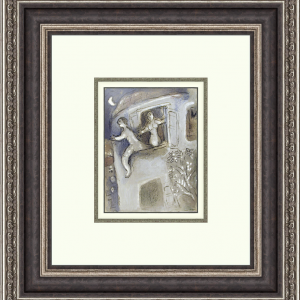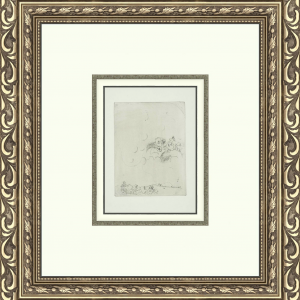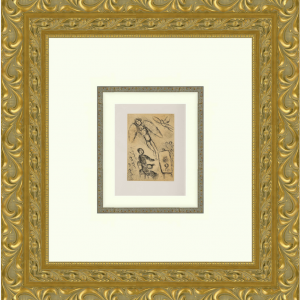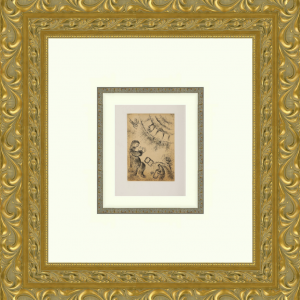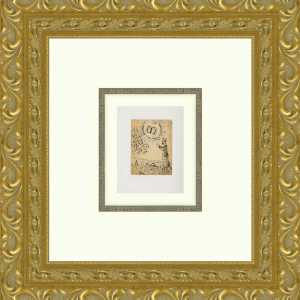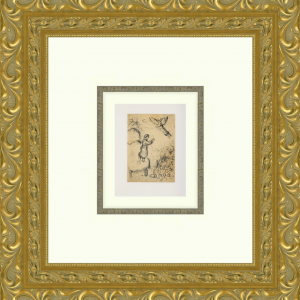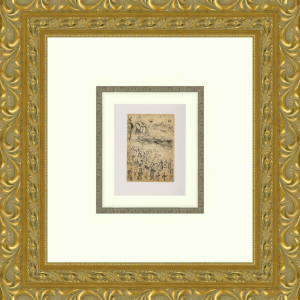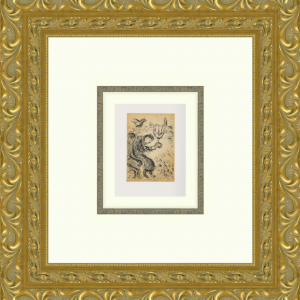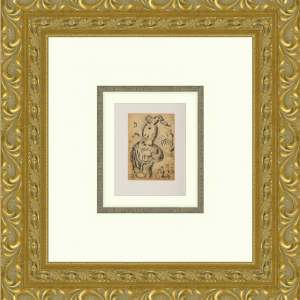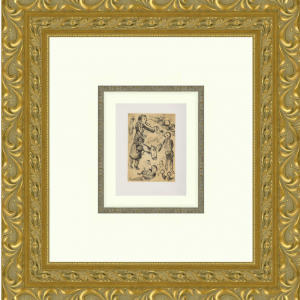Marc Chagall was a pioneering modernist painter whose poetic, dreamlike imagery made him one of the most beloved artists of the 20th century. Born Moishe Shagal in Vitebsk, in what is now Belarus, Chagall was raised in a Hasidic Jewish community whose traditions, folklore, and symbols would profoundly influence his art.
After studying art in St. Petersburg, Chagall moved to Paris in 1910, where he became part of the vibrant avant-garde community alongside Picasso, Léger, and other modernists. His work blended elements of Cubism, Fauvism, and Symbolism, yet remained uniquely his own—filled with floating figures, animals, lovers, and village scenes that evoke memory, spirituality, and fantasy.
Chagall’s career spanned painting, printmaking, stained glass, ceramics, and stage design. His monumental stained-glass windows, including those for the United Nations, the Jerusalem Hadassah Medical Center, and cathedrals in Reims and Metz, stand as a testament to his genius for color and light.
Throughout his life, Chagall’s work explored themes of love, Jewish heritage, and the human spirit’s resilience in the face of exile and upheaval. His luminous, lyrical style continues to enchant audiences and has secured his place as one of the most iconic and influential artists of the modern era.

Showing all 16 results
